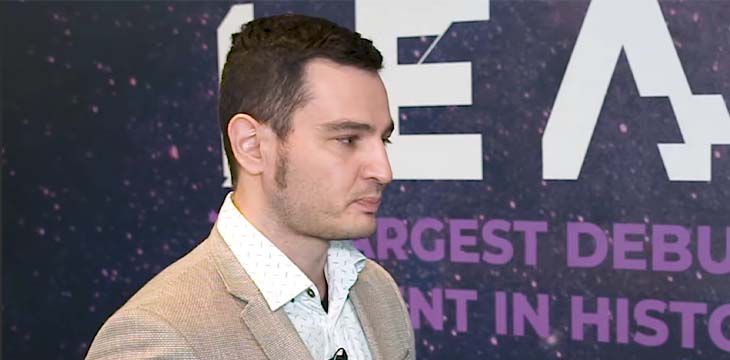Construction is the most inefficient industry ever, but blockchain technology can transform it for the better. This is according to Dr. Maximilian Sinan Korkmaz, a German civil engineer who has been involved in the industry for close to two decades. On the sidelines of LEAP 2022, Dr. Korkmaz talked to CoinGeek Backstage about how his firm is using Bitcoin SV to solve some of the challenges facing the construction industry.
Dr. Korkmaz was in the BSV contingent at the inaugural LEAP 2022 tech conference in Riyadh, Saudi Arabia. He was on the BSV Blockchain Fintech panel in which he highlighted the challenges that his industry faces, the solutions that have been tried and failed, and how the BSV enterprise blockchain is the best solution for these challenges.
Dr. Korkmaz has been working in the construction industry for 17 years now. After graduating as a civil engineer, he held various positions with major construction firms all across the world. In that time, he experienced first-hand the challenges that the sector faces, some of which have been around for centuries, he told CoinGeek’s Becky Liggero.
“I’ve seen a lot of challenges. I’ve learned the hard way that the construction industry is broken. The construction industry is the most inefficient industry ever. This is known and experienced by everybody who works in the industry.”
After years of dealing with the same challenges, he decided that “if they are not going to solve these [challenges], I will build a startup and work on them.”
Dr. Korkmaz is the founder of a Stabilwerk Bau, a construction company based in Frankfurt, Germany, that accepts BSV blockchain-based credit tokens as payment for its services.
This payment system is a godsend for small construction companies, Dr. Korkmaz believes, as they always struggle with cash flow. He offers a 10% discount for customers who use the tokens to pay for his services, with the incentive for him being an assurance that he will get paid once he does his job.
Watch: LEAP 2022 Saudi Arabia highlights with Becky Liggero
Source: Read Full Article
